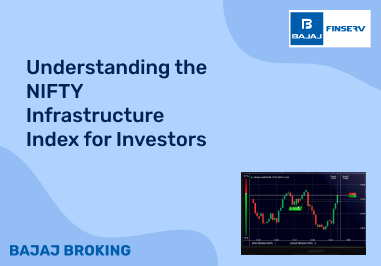A successful investment journey in a stock market is not linked to a stroke of luck or a random throw of dice. It is a calculated and meticulously planned exercise that requires a lot of information and understanding to make the decisions that are best under circumstances but also careful of future risks.
The sheer magnitude of choice in the stock market is so great that it can confuse even the wisest of the investors. What can worsen the confusion is the real-time changes in the market that determine the profit and loss and can shape up destinies. That is why it is always prudent to make use of analytical tools and indices in your investment journey, which assist you in making informed decisions.
An index is a statistical tool that assists an investor in tracking the performance of equity and other assets. Nifty 200 which belongs to Nifty group of indices is one such statistical tool which assists an investor in tracking the performance of mid and large market companies. Read on to know more about Nifty 200 and how it is an important tool in the hands of an investor.
Introducing Nifty 200
A stock market index is a key real-time indicator that is used by investors to track and monitor the performance of stocks and other financial assets. One such index used for stocks listed at the National Stock Exchange (NSE) is Nifty 200.
Nifty 200 is the amalgamation of all the companies that form Nifty 100 and Nifty Midcap 100 index. This index is used to monitor the behaviour and performance of mid and large market capitalisation companies.
The Nifty 200, like all the NSE indices, is managed by a team of professionals and reviewed on semi-annual basis, with a cut-off date of January 31 and July 31. The average data of past six months ending the cut-off date is considered during the review.
This index is among the 17 broad indices developed by NSE Indices Limited, which was formerly called the India Index Services & Products Limited. It was first launched in 2011. The main sector in the Nifty 200 is the financial services, which forms 32.22 percent of the companies in this index, followed by the Information and Technology companies at 11.02 percent.
Nifty 200 Selection Criteria
The companies that are part of Nifty 100 and Nifty Midcap 100 indices are combined to form Nifty 200. It means that the composition of Nifty 200 includes top 150 companies based on full market capitalisation and the remaining are selected from mid market capitalisation companies on the basis of average daily turnover. The total number of companies in Nifty 200 is 201.
Any change in the composition, whether it be inclusion or exclusion, of the Nifty 100 and Nifty Full Midcap 100 is simultaneously reflected in Nifty 200.
This index is computed by a method called the Free Float Market Capitalisation. This method uses the publicly available stocks and excludes the shares restricted to the public. The purpose of Nifty 200 is to benchmark fund portfolios, launch of index funds and exchange traded funds, and other structured products.
Key Characteristics of Nifty 200
Developer
| NSE Indices Limited
|
Parent Index
| Nifty 100; Nifty Midcap 100
|
Base Date
| January 01, 2004
|
Launch Date
| July 19, 2011
|
Base Value
| 1000
|
Calculation Frequency
| Real Time
|
Index Rebalancing
| Bi-Annual
|
Reconstitution Effective From
| March, September
|
Five Top Constituents in Nifty 200 by Weightage*
Company
| Weight (%)
| Sector
|
HDFC Bank Ltd.
| 9.56
| Financial Services
|
Reliance Industries Ltd
| 6.68
| Oil and Gas
|
ICICI Bank Ltd
| 5.53
| Financial Services
|
Infosys Ltd
| 4.21
| IT
|
ITC Ltd
| 3.27
| FMCG
|
*As on October 31, 2013
Other Broad Market Nifty Indices
Like Nifty 200, there are 16 other Nifty broad market indices which can be used by investors to make better investment decisions. These indices are: Nifty 500, Nifty 500 Multicap 50:25:25, Nifty Microcap 250, Nifty 100, Nifty Midcap 150, Nifty Smallcap 250, Nifty 50, Nifty Next 50, Nifty Midcap 50, Nifty Midcap 100, Nifty Midcap Select, Nifty Smallcap 50, Nifty Smallcap 100, Nifty LargeMidcap 250, Nifty Midsmall cap 400.
Conclusion
It is important to use analytical and statistical tools during your investment journey. These tools, like Nifty 200 or other such indices, can be of crucial assistance to you in making informed investment decisions. Nifty 200 is a monitoring index of 201 mid and large market capitalisation companies.
You should make use of more such indices and tools to bring an element of professionalism to your investments. It is always better to stay informed and updated if you want to stay on and grow in the stocks business.













